Uttara Kanda, the 7th part of Ramayana is generally attributed to Maharshi Valmiki.
Ramayana was originally composed as itihaasa in 6 kanda (parts). Bala Kanda of original ramayana describes Valmiki composing twenty four thousand verses and taught them to Lava and Kusha, the sons of Rama and Seetha. The two youngsters sing the ballad among the assemblages of sages and saints, and win laurels. Rama on seeing the boys singing on the streets and king’s ways of Ayodhya, brings them to his palace, and summons all his brothers and ministers to listen to the ballad. Rama himself is put to the turmoil, for the ballad sung by these youngsters narrates the legend of Seetha. But he himself collecting his calm, Rama paid his attention to listen the ‘Legend of Seetha‘ (seethaayaH charitam mahat) as Valmiki calls Ramayana.
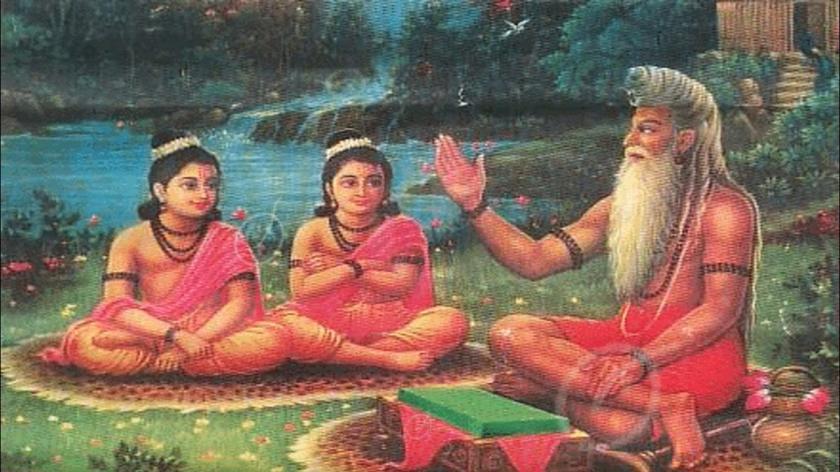
काव्यं रामायणं कृत्स्न्नं सीतायाश्चरितं महत् |
पौलस्त्यवधमित्येवं चकार चरितव्रतः || १-४-७
Valmiki with observed sacred vows has rendered the entire epic in the name of ‘Ramayana‘, ‘Sublime Legend of Seetha‘ (seethaayaH charitam mahat) and ‘elimination of Ravana‘ (poulyastha vadha).
These 2 names were initially considered before Ramayana was finalized.
Towards the end of Yuddha Kanda (6th part), Valmiki descibes Rama’s coronation as the King of Kosala Kingdom and very briefly about the happy life of the people under his reign.
सर्वे लक्षणसम्पन्नाः सर्वे धर्मपरायणाः ||
दशवर्षसहस्राणि रामो राज्यमकारयत् | (६-१२८-१०६)
All the people were endowed with excellent characteristics. All were engaged in virtue. Rama was engaged in the kingship thus for few tens of years.
(Here Sahasra does not actually mean 1000, but multiple).
In the fag end slokas of Yuddha Kanda PHALA SRUTI, the result of reading Srimad Ramayana, was described.
धर्मयं यशस्यमायुष्यं राज्ञां च विजाअवहम् ||
आदिकाव्यमिदं चार्षं पुरा वाल्मीकिना कृतम् |
पठेद्यः शृणुयाल्लोके नरः पापात्प्रमुच्यते || (Yuddha Kanda 128 Sarga 107-108 Slokas)
Translation : In this world, whoever person reads and listens to this foremost lyric derived from the speech of a sage, which is endowed with righteousness, conferring fame and longevity, fetching victory to kings and as written at first by Valmiki, that person is delivered from all misfortune.
श्रुत्वा रामायणमिदं दीर्घमायिश्च विन्दति |
रामस्य विजयं चैव सर्वमक्लिष्ठकर्मणः || (Yuddha Kanda 128 Sarga 112 Sloka)
Translation : On hearing this epic of Ramayana and all the episode of victory of Rama, who was unweary in his actions, a person gets longevity to life.
विनायकाश्च शाम्यन्ति गृहे तिष्ठन्ति यस्य वै |
विजयेत महीं राजा प्रवासि स्वस्तिमान् भवेत् || (Yuddha Kanda 128 Sarga 116 Sloka)
Translation : Whoever carefully listens to the epic in his house, all obstacles come to an end. A king conquers the earth. A person staying away from home, fares well.
Valmiki composed Ramayana with approximately 24000 slokas in Anustup chhand (meter in sama veda music).
All parayana books end with Phala Sruti, which describe the result of reading a Sacred Text.
This phala sruti is at the end of composition, not in the middle.
If Valmiki intended to write Uttara Kanda at later stage, he would not have added phala sruti in the end of Yuddha Kanda.
The incident of Rama’s sons Kusa and Lava growing up at Valmiki hermitage and learning to Sing Ramayana is true as it was described by Valmiki himself at begining of Bala Kanda.
But there are many stories in Uttara Kanda, which prove that it is a Prakshipta (edited and added at later date).
To add more spice to a fictitious story, cinema and TV series have added more drama. The scene of fight between Washerman and his wife, where he blames Rama for bringing back seetha from lanka, does not even exist in Uttara Kanda of Ramayana.
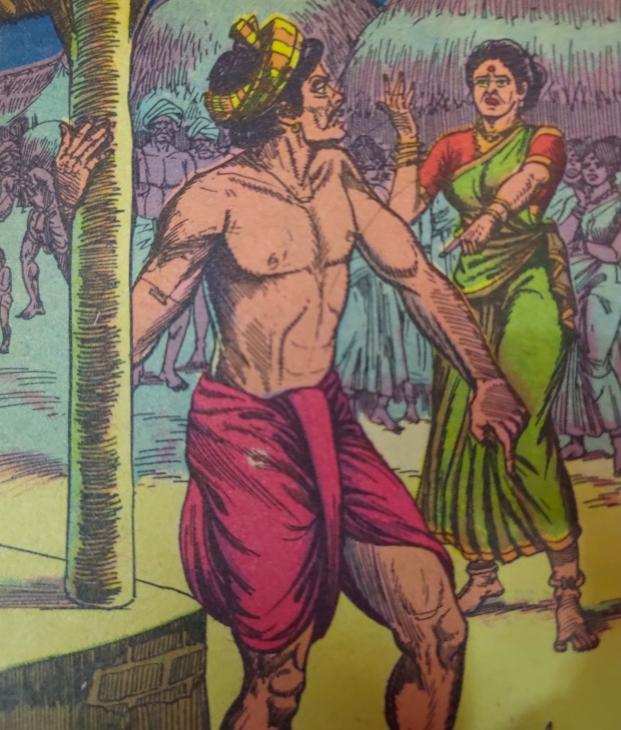
One day seetha herself expresses desire to spend few days at a hermitage, far away from city. Rama agrees to send her to Valmiki ashram next day.
Same night Rama learns from his spies (Bhadra) about people discussing in general, how Rama could bring his wife back after she lived for 1 year in Lanka.
Seetha is sent with Lakshmana, who leaves her on the opposite bank of river Ganga in Valmiki ashram.
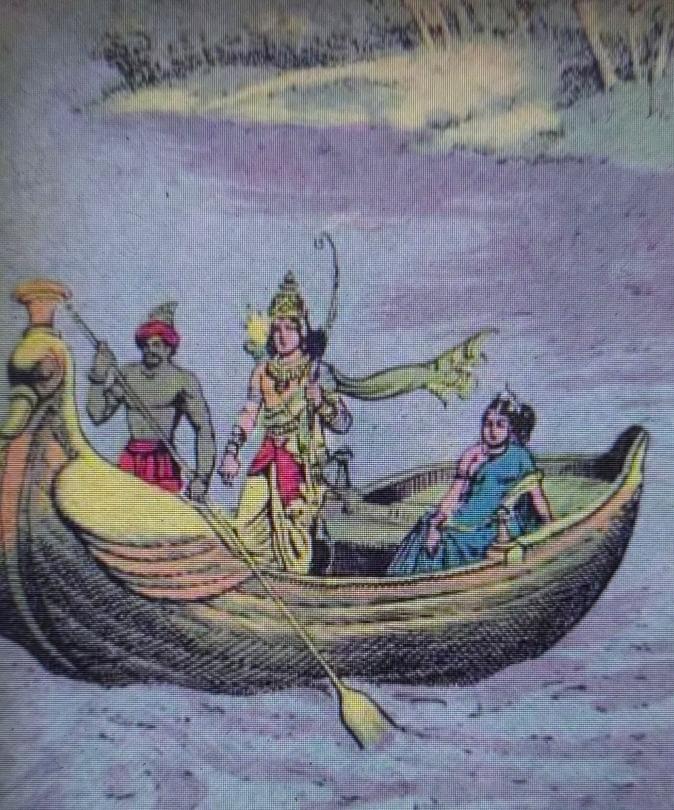
Seetha reaches Valmiki ashram with gifts for men and women living there. She is pregnant at that time and is sent well prepared to stay there.
After few days, Rama’s younger brother Satrughna decides to attack Lavanasura, who killed their ancestor Mandhata and was ruling Madhuvan.
Satrughna, on his way reaches Valmiki hermitage and stays there for a night.
Same time, Seetha delivers twin kids. Valmiki wipes them with kusa grass (dharbha) and names with Kusa (grass root) and Lava (grass tip).
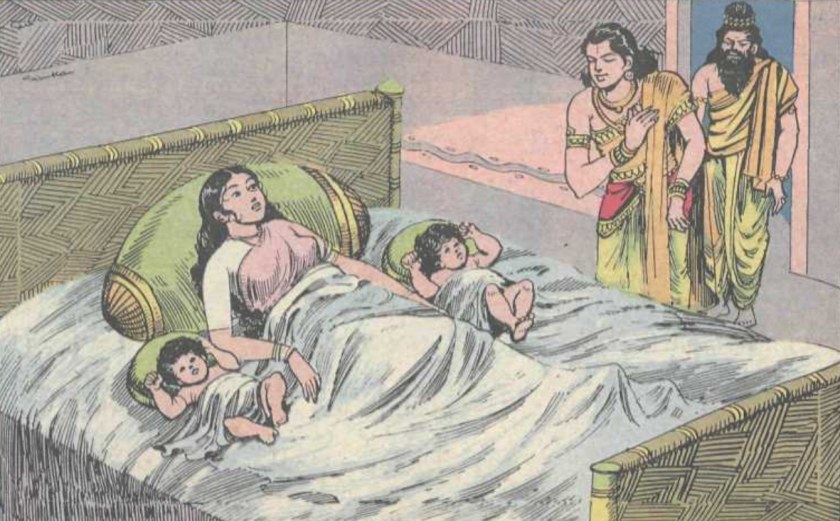
Satrughna forms city of Mathura
Satrughna offers clothes and gifts for new born kids and leaves towards Madhuvan (forest).
He kills Lavanasura, forms a new city in the name of dead asura as Madhura (Mathura) and rules for 12 years.
When he desires to visit his brother Rama, he stops at Valmiki hermitage on the way.
By this time, Kusa and Lava are 12 year old kids, who learnt to sing Ramayana.
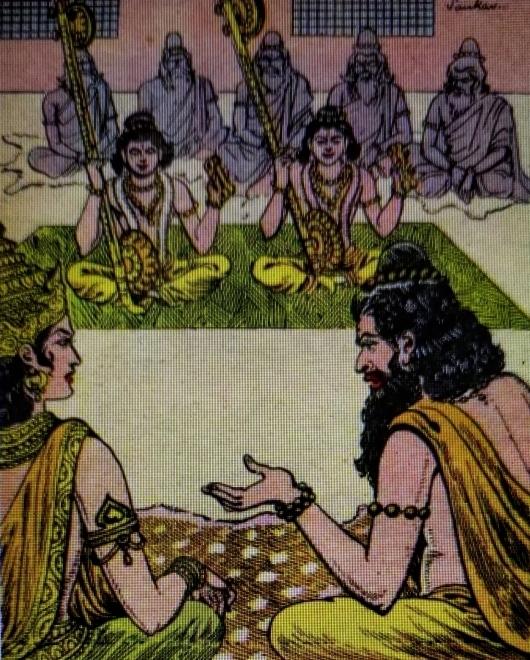
He listens to their singing and takes them to Ayodhya, where they enter by singing it in streets.
Satrughna brings them to Rama, who listens to his own story and says Srimad ().
Kusa and Lava stay back with Rama, who decide to perform Aswamedha Yagna (Horse worship). Few editions and misinterpretations have tried to conclude that Aswamedha is horse sacrifice or animal sex, just to generate self-hatred among vedic followers.
Rama performs Aswamedha Yagna, towards the end of which Seetha is brought back to Ayodhya, and she decides to leave permanently to Rasatala (not into the earth as shown in cinema/TV).
Many cinema and TV series tried to project fake stories such as Lava Kusa catching the Horse and later all 4 brothers (Rama, Lakshmana, Bharata, Satrughna) along with Hanuman fighting and losing against them !
When Satrughna knew them from valmiki ashram, how will he again fight without recognising them ?
Also, how will 12 year old kids defeat warriors who killed thousands of asuras in forest and Lanka.

In later parts, Rama and Lakshmana discuss backstories of Vaali, Ravana etc.
In Sundara Kanda (5th part), Vibhishana trying to stop Ravana in ordering killing of Hanuman, says there was no precedence, of killing messenger.
वैरूप्याम् अन्गेषु कश अभिघातो |
मौण्ड्यम् तथा लक्ष्मण सम्निपातः |
एतान् हि दूते प्रवदन्ति दण्डान् |
वधः तु दूतस्य न नः श्रुतो अपि || (Sundara Kanda 52 Sarga 15 Sloka)
Translation : Some of the punishments to an envoy are-deforming the limbs, striking with a whip, shaving the head and impressing marks on the body. Indeed, we have not heard at any time of killing a messenger.
Vibhishana was saying just One month before Great Battle that took place in Lanka. He was saying that till then there was no precedence of Killing a messenger.
But, 13 th Sarga of Uttara Kanda describes about killing of the messenger of Kubera by Ravana.
This was done when Ravana occupied Lanka from Kubera and was at war with many kingdoms at his younger age.
How can Vibhishana mention that a doot (messenger) was never killed in history. This proves that a fake incident was inserted in Uttar Ramayan by someone later.
Fag end slokas of Yuddha Kanda described that While Rama was ruling the kingdom, people survived for many years, with multiple progeny, all free of illness and grief. And, old people did not perform obsequies concerning youngsters.
निर्दस्युरभवल्लोको नानर्थः कन् चिदस्पृशत् |
न च स्म वृद्धा बालानां प्रेतकार्याणि कुर्वते || (Yuddha Kanda 128 Sarga 100 Sloka)
Translation : The world was bereft of thieves and robberies. No one felt worthless nor did old people perform obsequies concerning youngsters.
Any father performing last rites of his kids is considered as lack of dharma in kingdom. Valmiki Ramayana says that no such incident happened.
But Uttara Kanda of Ramayana (73 – 76 sargas) mentions an incident where a Brahmin walks in with his dead son and blames Rama for lack of ‘Dharma’ in his rule.
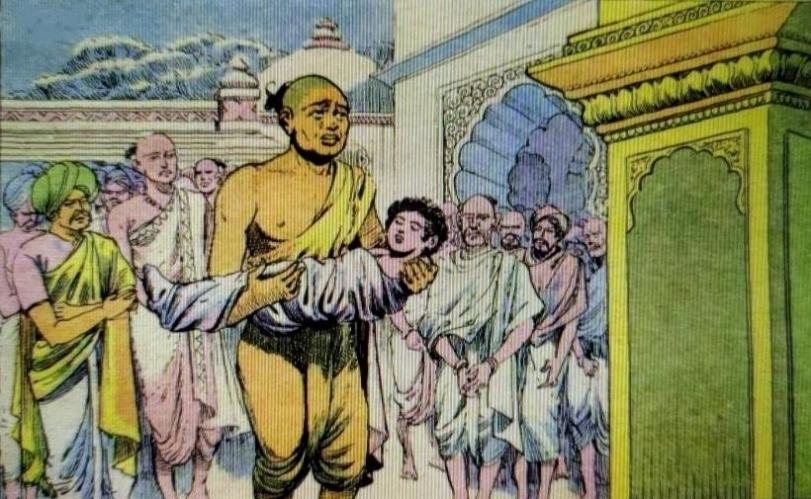
Upon premature death of his son, the bereaved father carried his body to the gate of Rama’s court, and placing it there, cried aloud and bitterly reproached Sri Rama for the death of his son, saying that it must be the consequence of some sin committed within his realm, and that the king himself was guilty if he did not punish it; and finally threatened to end his life there by sitting on a dharana (hunger-strike) against Sri Rama unless his son was restored to life.
Sri Rama thereupon consulted his council of eight learned Rishis, and Narada amongst them told him that some Sudra among his subjects must have been performing Tapasya (ascetic exercises), and thereby going against Dharma !
His ministers and rishis conclude that only Brahmins have right to do tapasya and any Soodra doing it will cause such adharma.
Rama goes out in his Vimana and finds a sudra named Sambooka, who was doing tapasya while hanging upside down from a tree.
Rama enquires about his details and then beheads him !
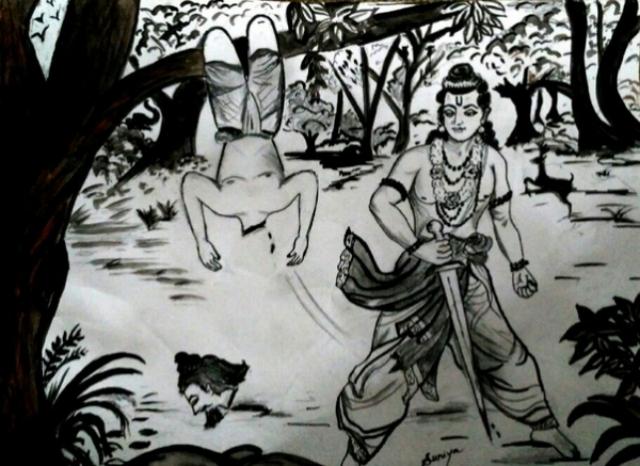
This incident was inserted at later date, when someone wanted to create self-hate among vedic practitioners and convert them into some other faith.
Manu Smriti 2.136 states that one earns respect due to wealth, company, age, actions and knowledge in increasing order. There is no mention of family, gotra, caste, lineage and other non-factors to demand or earn respect.
Manu Smriti 10.65 asserts that Brahmin can become Shudra and Shudra can become Brahmin. Similarly Kshtariyas and Vaishyas can also change their Varnas.
So, varna was not constant that stays till end of life. One can change varnas by their actions. There are many who did tapasya irrespective of their birth.
Even asuras did tapasya and got boons.
To add more spice to his story, the writer even inserted that once Sambooka was beheaded at a distant place down south, the dead Brahman boy in distant Ayodhya began to breathe again ! Such a miracle was not even imagined by cinema writers.
To add further, gods rained flowers on the king from their joy at his having prevented a Shudra from gaining admission to their celestial abode through the power of the Tapasya which he had no right to perform.
But, animals, insects, reptiles could attain higher abodes and even salvation (SriKalaHasti), whereas a human is unfit to do so.
There are multiple names given to children born from parents of different varnas. Brahmin father – Kshatriya mother gives birth to suta (who writes and maintain books).
Vaisya father – sudra mother gives birth to karaNa.
Dasaratha was cursed by one rishi, whose karaNa kid died due to his arrow. If king Dasaratha had rights to kill a non-brahmin for doing tapasya, then curse would be invalid.
But he took the curse and felt sorry for his actions.
This incident proves that any varna born can do tapasya.
Sabari was a tribal lady, who became an anchoress and was performing tapasya in anticipation to meet Rama.
This Sambooka story was just inserted to create differences and self hatred, which can help in internal division and religious conversions.
In the same way, Rama did not get ‘Brahma Hatya Patakam‘ by killing Ravana.
This Ravana was born to a rishi Visravasa and unmarried kshatriya lady Kaikasi. He took up ruling a kingdom like his maternal relatives.
So he was concluded to be a Kshatriya ruler.
In Mahabharata, Vidura was born to rishi Vyasa and a maid. He was neither treated as a brahmin, nor as kshatriya, but only as a servant by his brothers.
He was made minister/advisor for his knowledge.
Same way, Paandu and Dhritarashtra were considered kshatriyas because of their mothers, but their biological father Vyasa was never considered.
Rama installed a Siva Linga at Rameswaram before commencing the war. If there was ‘Brahma Hatya Dosha‘, he would have immediately installed one more in Lanka or on the way. But he never did and was in a hurry to reach Nandigrama to prevent Bharata from committing suicide after completion of 14 years.
In Mahabharata, 272-289 Sections of Vana Parva, the story of Sri Rama was narrated to Yuddhistara by Sage Markandeya. Though the story contains minor variations compared to the story told in the Srimad Ramayana, those episodes describe the story of Sri Rama in full.
However, the sage Markandeya ends the story of Sri Rama in 289 Section of Vana Parva of Mahabharata with the coronation of Sri Rama as the king of Kosala Kingdom. No mention was made therein the story of UTTARA KANDA !
Another insertion in Uttara Kanda is Dog-Brahmin story.
One day a bleeding dog walks into Rama’s court and complains that a monk named Sarvardhasiddha hit him on head without any reason.
Brahmin monk is called upon, who says that he did not get any Bhiksha (alms) since morning, so hit the dog on his way in frustration.
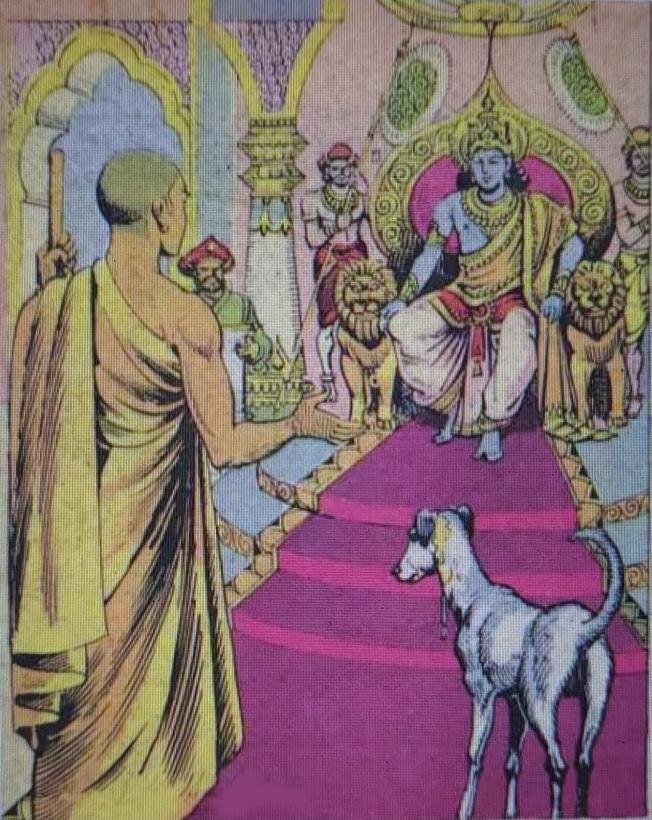
Rama asks Vasishta, Kasyapa, Angirasa, Bhrigu, Kutsa etc rishis in his court and they conclude that brahmin should not be punished.
Dog asks Rama to appoint Sarvardhasiddha as Kulapati (head of a shrine/mutt) in Kalanjar.
Minister think this not a punishment but promotion to that brahmin.
Dog concludes that it held similar post in its past life.
Dog says : “After performing daily pooja activities, donating to servants, feeding the guests, i used to eat.
Also i used to protect the money of organization (Mutt) sincerely.
If a honest mutt owner like me becomes dog in next life, imagine what can an impatient and angry man like sarvardhasiddha become in his next life.
This is the punishment i want for him.
If you want someone and their next 7 generations to suffer, give them ownership of a mutt of temple maintenance duty”
This is also a forced insertion, as the story conflicts with Ramarajya.
Valmiki describes that nobody felt hungry and food was always available to everyone under the rule of Rama.
Then how can a brahmin sanyasi get frustrated for lack of food and hit a dog ?
Also the concept of mutt, maintenance of mutt or peetham, kulapati etc started during Adi Sankaracharya era, when he formed mutts in different directions of country.
He did so when Buddhism was at peak and most kings were converted.
To preserve vedas and vedic lifestyle, he started 4 mutts in 4 directions (Sringeri, Dwaraka, Puri, Badrinath) and gave 1 veda each to follow.
Prior to kaliyuga, the concept of building temples everywhere was non-existent. Idol worship was very much limited durin Treta yuga as most of them worshipped at home.
As Sankaracharya went against Buddhism and tried to re-establish vedic religion, buddhists or jain monks must have inserted this dog-monk-mutt story to create self hatred among brahmins.
The concept of sanyasi was very rare as most rishis were married in those days.
And no sanyasi was allowed to stay at one place for more than a night. He was supposed to wander and not own or maintain any organizations.
This bhikshu (begging monk) were frequently seen after many turned to buddhism and became lazy.
Everyone thought that just by becoming a monk, one would get free food and kingdom would take care of them.
Sankaracharya was against it as created more lazy people, kings started appeasement of one religion followers and this created imbalance in society.
If everyone begs, who is going to cultivate and produce food ?
So he tried to re-establish vedic varna system, where everyone is guranteed work as per their skill and also food.
Some jealous buddhist monk must have inserted this story to make brahmins hate themselves and also others hate them.
Till date, such fake stories are used by abrahamic religions and atheists to spread differences between hindus and convert them.
Similarly stupid stories like conflict between Owl and Eagle are inserted to prove that Rama had solved such silly issues to become famous.
Eagle claims a nest which he built when humans started inhabiting earth. Owl claims that it built when Trees started growing on earth.
Rama concludes that nest belongs to owl as Trees grew before humans were born.
Why do they need a king like Rama to solve a simple question. Even a school kid can answer this.
Yuddha Kanda describes one incident where Rama sends Vaali’s son Angada as messenger to Ravana, just before begining of war.
Angada goes to Ravana’s court and announces himself but Ravana without recognizing his father’s name, asks his men to capture Angada.
Uttara Kanda describes a story where Vaali grabs Ravana and performs sandhya vandanam in 4 different oceans. Ravana is atonished by Vaali’s strength and asks him to be his friend.
If Ravana knows Vaali as a stronger man and a friend already, why would he not recognize when Angada takes his father’s name ?
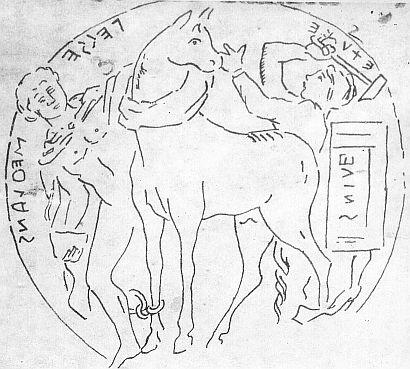 Ramayana travelled towards east but there is no uttara kanda in Thailand or Indonesian Ramayana.
Ramayana travelled towards east but there is no uttara kanda in Thailand or Indonesian Ramayana.
It travelled towards west and distorted versions with Lava-Kusa capturing the horse.
An ancient painting found in Italian home showing Lav and Kusa driving away a captured royal sacrificial horse (Aswamedha Yaga) belonging to their father Rama.
This is ascribed to brothers Remus and Ramulus, which are latter-day variations of the Hindu name Rama.
Etruscan civilization of Ancient Italy has paintings from Ramayana.
Ancient Italian city of ‘Ravenna‘ is believed to be an Etruscan name and the word resembled ‘Ravana‘, the villain of Ramayana.
It is said that Rome is named after Rama.
After the death of Ravana, Vibishana tookover as king of Lanka and ordered few leftover loyal people of Ravana to leave his kingdom.
It is believed that few giants have moved to north and south america, while others migrated towards europe and middle-east.
